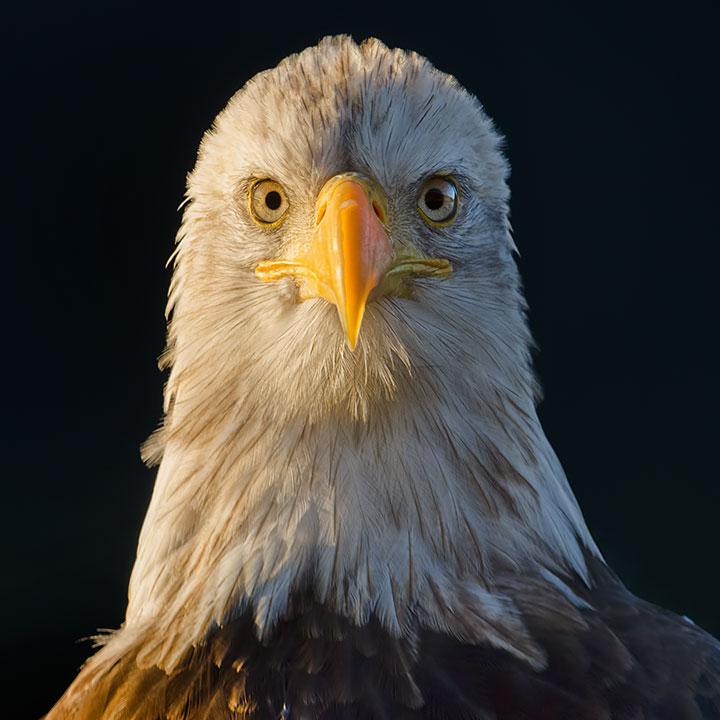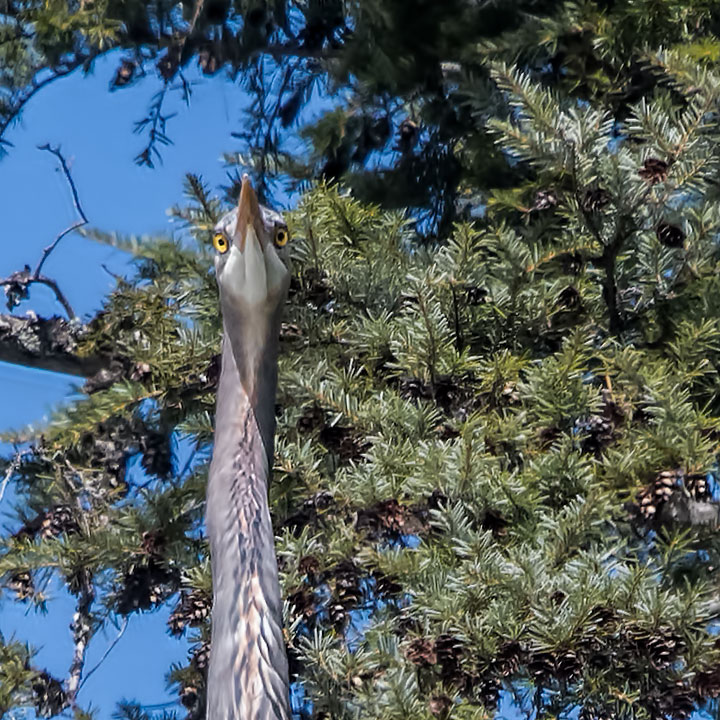
This Bald Eagle exhibits anisocoria.
A half-dozen years ago, I posted an eagle portrait. It was taken just as the light from the rising sun touched one side of the eagle’s face. A striking feature of the portrait is the eyes: The pupil on the sunlit side is smaller than that on the shady side.
In most humans, the pupils are synchronized, and so the size of the pupils match. When they do not, the usually harmless condition is known as anisocoria (aniso = unequal; cor = pupil; ia = condition).
Of course, birds are not people; their eyes behave differently. It seems that anisocoria is a normal characteristic of birds. Yet, I hadn’t noticed it again until today when a Great Blue Heron looked down on me. Again, the lighting was uneven, and, like the eagle, the heron exhibited anisocoria.
The lighting on the two sides of this heron’s face is different, resulting in different pupil sizes.


Such magnificent shore birds, with such an interesting guttural voice!
Hi Alistair
And such a keen eye too – not the heron’s so much as your own.
By golly I have never noticed this before. Thanks for educating me once again. BTW that head- shot of the eagle is magnificent!
Ditto Trevor & Joy! How did you ever get BELOW a heron, and so close (can’t see that a long lens would be used here) ?
How very interesting . Many thanks again